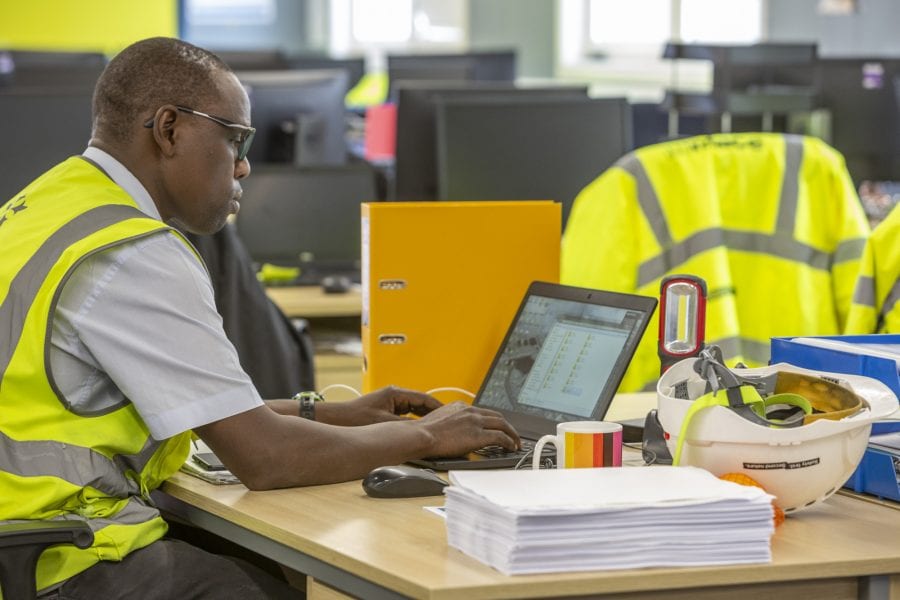Why Preconstruction Planning is Essential
The Millennium Bridge in London was one of the most iconic construction projects of the 2000s. But just two days after opening, the bridge had to close after visitors experienced an alarming sway from side to side.
The problem was that designers hadn’t anticipated just how much the bridge would vibrate as pedestrians crossed, or the “synchronous lateral excitation.” It was a mistake that took £5m and eight months to fix – and the landmark is still known as the wobbly bridge today.
Construction projects depend on thousands of details decided during the planning phase. But 86% of main contractors in the UK and Ireland admit that errors are made in preconstruction thatimpact the project down the line, costing time, money and untold stress.
With careful planning, it’s possible to head off many of the potential challenges on a project before breaking ground.
Here are nine tips for the best pre-construction practice, to minimize mistakes, improve performance and avoid those wobbly bridges.
1)Establish clear lines of communication and responsibility
Preconstruction involves a plethora of stakeholders with their own concerns. It’s only possible to meet all these demands if everyone is held accountable for hitting clearly defined goals and deadlines.
The preconstruction team must agree clear objectives for the project’s design and realistic goals for delivery with the companies involved. And with clear lines of communication supported by real-timecollaboration technology, any problems can be dealt with quickly by the person responsible.
2)Use collaborative scheduling to set a realistic timeframe
Four in five owners are concerned aboutcontractors delivering work late, so creating a realistic schedule is critical. But that means gaining input from everyone involved, from designers and engineers to vendors and supporting staff.
Creating a schedule that encompasses not only the construction itself but supplementary tasks like acquiring permits will enable you to set a realistic timeline – and keep the client happy.
3)Make budgeting and cost tracking easier with technology
Hidden or unexpected costs are one of the quickest ways to turn a project from profitable to painful. But creating anaccurate budgetis tricky, particularly if you’re relying on Excel or manual calculations.
Automatedestimating toolscan help teams create a robust budgeting and cost-tracking process. Meanwhile, considering a wide range of potential costs ahead of time can help to minimize the risk of going over budget.
4)Focus on logistics to keep the site moving
With workers, supplies, materials and machinery converging on what can be a small space, construction sites are often very busy places to be. That’s why site coordination can be a significant factor in completing a project on time and on budget.
Dedicating time to optimizing the on-site logistics during preconstruction will keep everyone moving smoothly during the project – and again, there are digital scheduling tools that can help.
5)Share detailed information with the whole team, through the benefits of BIM
Building Information Modelling (BIM) can be a powerful tool, not only for design but throughout the project. Today it’s possible to build detailed information directly into the model that can support the whole build, from equipment loads and product specifications through to on-site hazards and schedules.
This information can support preconstruction processes, from timelines to budgets. It’s also possible to get more collaborators involved in the planning phase, helping to identify and avoid errors further down the line.
6)Use a cost index to stop inflation upsetting your forecast
Inflation can make budget forecasting difficult. But using a cost index can help to track – and minimize – price increases during the course of a project.
Requesting costs from subcontractors during the bidding process, and applying the cost index at the time of purchase, can enable companies to agree a final price with subs and avoid shock increases.
7)Be proactive about permits
Obtaining all the necessary permits for a project can be a time-consuming part of preconstruction. Meeting with officials ahead of time can help you to get a clear sense of what will be needed, smoothing out the process and ensuring that nothing is overlooked.
8)From design to construction, make it sustainable
Sustainability is fast becoming one of the biggest focuses in construction; in fact, 41% of owners are incorporating sustainable construction requirements into tender invitations.
There are opportunities to makemany parts of the project more sustainable, from design through to delivery. For each construction business, it’s about understanding what you can do to make your offering more sustainable – and win more work.
9)Help owners to achieve green certification, with in-house expertise
There are several benchmarks available to certify the sustainability of a building, whether it’s BREEAM or LEED. Achieving different levels can be a complex administrative process, and requires careful planning during the preconstruction phase.
Construction companies can help owners to understand the options for the project, outlining the different sustainability goals achievable and the cost and time involved in each. Some firms are offering support with the certification process itself, adding extra value for clients.
我g the stage for success
Preconstruction is a complicated phase in any construction project, involving multiple stakeholders and numerous processes. But following best practice can help businesses to set achievable client expectations, identify cost-savings and critically mitigate issues before they take place – boosting productivity and profitability on every project.







0 Comments